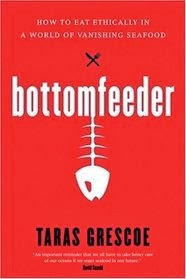As a conscious omnivore, when I eat meat, I eat as much of the animal as possible.
I like to treat fruits and vegetables the same way.
I save scraps like leek tops and shiitake stems for soup stock. I buy beets with their greens attached and eat those too. I roast the seeds from squash and pumpkins. And I always eat the outer layer of fruits and vegetables whenever possible because they are most nutritious with their skins and peels intact.
Antioxidants, which protect plants from the sun's ultraviolet radiation, are concentrated in the outer layer of fruits and vegetables. Produce peels and skins are also good sources of fiber, minerals and other important phytonutrients.
Citrus fruits have exceptional peels. They contain flavonoids like nobiletin and tangeritin that have anti-inflammatory and anti-tumor effects in the body. Studies show that these flavonoids can induce the death of cancer cells (apoptosis) and reduce the chance that tumors will spread to other parts of the body.
Limonene, a monoterpene compound found in the essential oils of citrus fruit peels, also has anti-cancer activity. It stimulates enzymes in the liver that break down carcinogens and alters gene expression in cancer cells to inhibit their growth. Monoterpenes like limonene have been shown to prevent cancers of the breast, colon, liver, lung, pancreas and skin.
Because pesticides are often concentrated on the outer layer of produce, only eat peels from citrus fruits that have not been sprayed. When your citrus fruits are organic, always eat their zest.
Citrus fruits are easy to find in the winter and several varieties abound: grapefruits, oranges, blood oranges, tangerines, clementines, mandarins, satsumas, lemons, limes, kumquats, etc. When you buy by the bag, prices for organic fruit can be comparable to their conventional counterparts.
How can you eat citrus zest?
- Stir it into yogurt and smoothies
- Sprinkle it on top of oatmeal and granola
- Whisk it into vinaigrettes and sauces
- Grate it into soup or risotto
- Dry it and add it to loose leaf teas, seasoning blends, and dry rubs
- Make a citrus reduction that you can drizzle over yogurt or whisk into vinaigrette (recipe follows)
Blood Orange Reduction
Make extra of this reduction if you can because it's lovely to have some leftover in the fridge. I like to stir it into cooked steel cut oats and add a dollop of plain whole milk Greek yogurt. (To make steel cut oats, bring 1 part rinsed oats and 3 parts water to a boil, turn off heat, cover, allow to sit overnight, then cook on the stove top over low heat for 10 minutes or until thickened as desired.)
If you can't find organic blood oranges, use another variety.
2 organic blood oranges, zest and juice
Zest of 2 organic lemons (save the juice for another purpose)
Pinch sea salt
Add all the ingredients to a small saucepan and warm over medium heat. Once the mixture starts to simmer, turn the heat down to low. Swirl occasionally and allow it to reduce until it becomes a few spoonfuls of a thick sauce. Taste for seasoning and adjust if necessary. Cool completely and store in an airtight container.
Blood Orange Balsamic Vinaigrette
This recipe is the perfect amount for a big salad. If you want to have some leftover, double or triple the batch.
1 tbsp blood orange reduction
1 tbsp balsamic vinegar
3 tbsp extra virgin olive oil, first cold pressing
Ground peppercorn to taste
Pinch sea salt (optional)
Whisk all ingredients together until smooth. Use immediately or store in an air-tight container in the fridge.
References:
Rooprai HK et al. Evaluation of the effects of swainsonine, captopril, tangeretin and nobiletin on the biological behaviour of brain tumour cells in vitro. Neuropathology and Applied Neurobiology. 2001 Feb;27(1):29-39.
Crowell PL, et al. Human Metabolism of the Experimental Cancer Therapeutic Agent D-Limonene. Cancer, Chemotherapy and Pharmacology, 1994;35:31-37.
Crowell PL and Gould MN. Chemoprevention and Therapy of Cancer by d-Limonene. Critical Reviews in Oncogenesis, 1994;5(1):1-22.
Dietary Phytochemical Research Demonstrates Potential for Major Role in Cancer Prevention. Primary Care & Cancer, 1996;16(7):6-7.
Foods That May Prevent Breast Cancer: Studies Are Investigating Soybeans, Whole Wheat and Green Tea Among Others. Primary Care and Cancer, February 1994;14(2):10-11.
Haag JD et al. Limonene-Induced Regression of Mammary Carcinomas. Cancer Research, 1992;52:4021-4026.
Hensrud DD and Heimburger, DC. Diet, Nutrients, and Gastrointestinal Cancer. Gastroenterology Clinics of North America, June, 1998;27(2):325-346.
Lee YC et al. Nobiletin, a citrus flavonoid, suppresses invasion and migration involving FAK/PI3K/Akt and small GTPase signals in human gastric adenocarcinoma AGS cells. Molecular and Cellular Biochemistry. 2011 Jan;347(1-2):103-15. Epub 2010 Oct 21.
Leonardi T et al. Apigenin and naringenin suppress colon carcinogenesis through the aberrant crypt stage in azoxymethane-treated rats. Experimental Biology and Medicine (Maywood). 2010 Jun;235(6):710-7.
Orange Peel Oil Studied as Cancer-Fighting Agent. Medical Tribune, May 30, 1991;11.
Potter JD. Your Mother Was Right: Eat Your Vegetables. Asia Pacific Journal of Clinical Nutrition, 2000;9(Suppl.):S10-S12.
Schardt D. Phytochemicals: Plants Against Cancer. Nutrition Action Health Letter, April 1994;21(3):7-13.
Stavric B. Role of Chemopreventers in Human Diet. Clinical Biochemistry, 1994;27(5):319-332.
Steinmetz K and Potter JD. Vegetables, Fruit and Cancer II: Mechanisms. Cancer Causes and Control, 1991;2:427-442.
Steinmetz KA and Potter JD. Vegetables, Fruit, and Cancer Prevention: A Review. Journal of the American Dietetic Association, 1996;96:1027-1039.




















